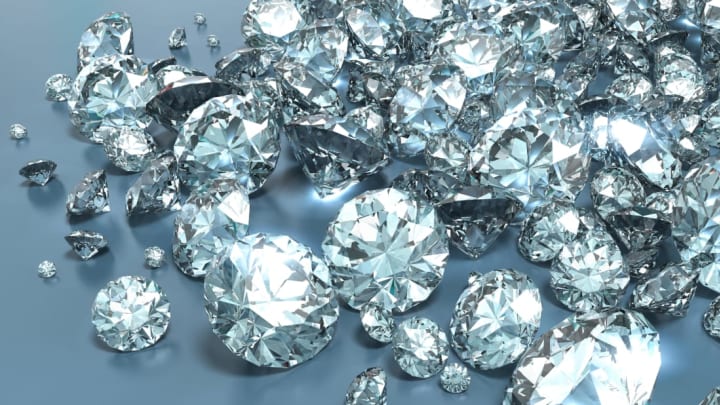Diamonds are forever—but their natural reserves aren't. Not only are diamond mines around the world drying up, but the ethics surrounding the exploitation of both resources and human labor has long been called into question.
De Beers, the world's largest diamond supplier, has another idea. The company recently announced it will start selling "lab-grown diamonds" through a new label called Lightbox, according to The Hustle. De Beers isn't the first company to make its own diamonds, but it does represent a major shift within the industry.
Synthetic gems cost 90 percent less than the real deal and they're touted as an ethical alternative to organic diamonds (even though De Beers doesn't plan on shutting its mining operations down anytime soon, and has been resistant to entertaining the home-grown approach). The market for real diamonds has taken a hit in recent years, and by some estimates, man-made rocks will become more popular than mined diamonds by 2020.
In recent years, other diamond-growing companies, like the California-based (and direct De Beers rival) Diamond Foundry, have found high-profile investors in people like Leonardo DiCaprio and Twitter co-founder Evan Williams.
The diamonds are grown through a process called chemical vapor deposition (CVD), which "involves pumping gases into a low-pressure vacuum," The Guardian explains. The reaction creates layers of carbon that come together to form a stone, and the process is used to produce everything from sunglasses to electronics to potato chip bags, according to the Massachusetts Institute of Technology (MIT).
While De Beers still asserts that natural diamonds are superior to synthetic ones, the two are nearly indistinguishable to the untrained eye. "Fundamentally there is no difference," Russell Hemley, of the Carnegie Institution's Geophysical Laboratory, told LiveScience. "Both have the same crystal structure. However, natural diamonds generally have many more defects."
Check out the video below to see how diamonds from the lab are made.
[h/t The Hustle]
